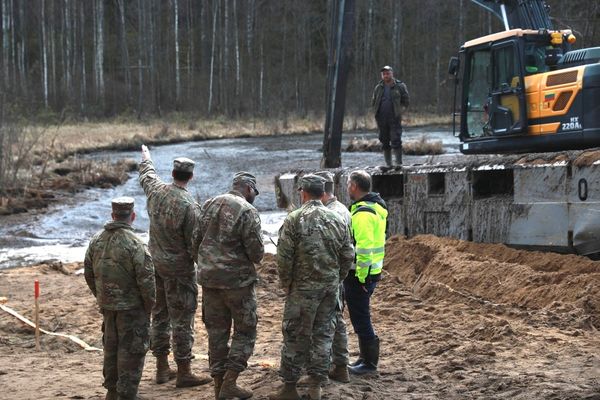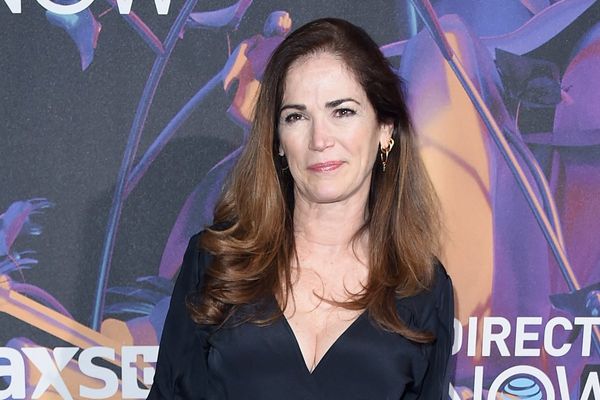
The Parliamentary Commissioner for the Environment is to report next month on offsetting short-lived methane emissions from livestock by planting fast-growing forests – a bid to address two of NZ's most vexed climate problems simultaneously
Dr Rod Carr says markets – in this case the Emissions Trading Scheme – have an important part to play sending signals about the real costs of greenhouse gas emissions.
But speaking at the Climate Change & Business Conference this week, the Climate Change Commission chair warns the “plant and pollute” nature of the present trading scheme, where companies can buy their way towards net carbon zero using forestry plantings as offsets, risks allowing them to get away with not reducing their actual carbon emissions.
That's why New Zealand needs new solutions – and just across Wellington, the Parliamentary Commissioner for the Environment is exploring one such.
“Increasingly the world is sceptical about biological offsets," Carr says. "If the only way is planting trees, and the only way to stay there is planting more trees, we are not going to meet our targets.”
The problem, Carr explains to Newsroom, is because carbon dioxide hangs around in the atmosphere such a long time (300-1000 years) each tonne of carbon has to be sequestered for that same period of time.
But trees only sequester carbon when they are growing, and an individual tree, particularly the fast-growing pinus radiata used for the majority of carbon offsets, might only be growing for 30 years.
If the wood remains wood – in a building, for example, or a long-term forest – the carbon remains sequestered. But if the wood or the tree decomposes or burns, carbon is released back into the atmosphere. And then you need another, growing, tree to sequester that same carbon.
"My grandchildren will have to keep planting trees for the emissions of the past. And if you keep emitting, you have to keep planting more." – Dr Rod Carr, Climate Change Commission
Meanwhile, each new tonne of carbon emitted from a business needs a new tree.
Which is why tree planting as an offset strategy is unsustainable, Carr says. There just aren’t enough trees.
“My grandchildren will have to keep planting trees for the emissions of the past. And if you keep emitting, you have to keep planting more.
“That’s what’s inherently unfair. My grandchildren are going to have all these pine forests.”
NZ out on a limb
Climate Change Minister James Shaw has similar worries about the potential for the current Emissions Trading Scheme settings to lead to a glut of forestry offsets, a crash in the scheme's NZ Unit carbon price, and no incentive for companies to actually do anything about getting rid of carbon from their business.
“Aotearoa is the only country in the world with an ETS that allows companies to offset 100 percent of their pollution with forestry,” he tells the conference.
“Anytime anyone plants enough trees to sequester a tonne of carbon, we automatically generate an NZU, which is a permit to pollute a tonne of carbon into the atmosphere.
“Which means, technically, unlimited forestry allows unlimited pollution.”
The Government has committed to a review of the trading scheme's sequestration supply and demand settings in the Emissions Reduction Plan, Shaw says.

Carr says New Zealand is in a relatively unique position when it comes to carbon sequestration because we have such a small population and so much available land.
The idea of net carbon zero targets came out of the Paris Agreement, a legally binding international treaty on climate change signed in 2015.
“Gross emissions reduction looked impossible. Net was more achievable,” Carr says.
“Initially it was about using new technologies: air capture of carbon or carbon storage. Trees weren’t a big thing because so few countries were thinking about planting billions of trees.
“But with our Emissions Trading Scheme and the price at $80 a tonne, for many companies it’s cheaper to pay $80 and plant trees. But that’s pushing the problem to future generations.”
A better and more permanent solution for carbon emissions may come from technologies like direct air capture (which takes CO2 from the air) and geologic sequestration (which locks it underground), Carr says, although these solutions aren’t yet being used at scale.
Don’t write off forests
James Treadwell, president of the New Zealand Institute of Forestry, says forests are and will remain an important part of reducing carbon emissions.
He tells Newsroom there are plenty of different sorts of trees – natives or slower-growing exotics – which don’t have the problems associated with radiata pine.
"Forestry has far less carbon footprint than farming." – James Treadwell, NZ Institute of Forestry
And he says polluting industry just isn’t going to be able to get to its net zero emissions targets without significant help from forests.
“If I was cynical, I would say that a lot of the argument [against forestry as carbon offset] is people worried about forestry going on land being used for farming, and banks are falling for that line.
“But the fact is that forestry has far less carbon footprint than farming.”

He says while the farming industry voice is strong, forest owners tend to be quieter. “We don’t lobby, we aren’t exciting. Politicians love farmers, they need their vote.”
He says he doesn’t buy the arguments about technological carbon capture.
“I hear we need to pull carbon out of the atmosphere or bury it in the ground. But no one has told me how they are going to do that. And I believe this sort of solution is going to need a lot of energy.
“Forests are neutral.”
The problem isn’t with the forests, says climate change and energy policy consultant Christina Hood, a former head of the International Energy Agency’s Climate Change Unit. It’s with the option they give polluters to do nothing.
Hood tells the Climate Change & Business conference a big change is underway in the way carbon offsets are viewed internationally.
“The thinking is coming through that offsetting is something you do for reducing emissions once you are already on track for reducing emissions.
“Fossil fuel emissions need to actually go to zero. Don’t offset instead of acting.”
A solution for agriculture
Associate Professor Malte Meinshausen is a climate and energy researcher at the University of Melbourne.
He has another idea (he called it “brainstorming from an outsider”) as to how forests could be used to help bring New Zealand towards a net zero carbon target without the problems associated with industrial offsets.
His plan is to combine methane reduction with forestry offsetting, which he estimates might get New Zealand to net zero by 2040.
From the outside, the plan makes no sense – trees don’t sequester methane, only carbon. Animals burp methane, not carbon.
But Meinshausen’s plan is to create a mechanism where the emissions calculations can cancel each other out.
“Agriculture is hard to abate, so forestry is a good thing to merge with it.
Some sort of emissions merger “could avoid forestry slowing the speed of the transition in energy, transport and industrial sectors, could avoid forestry being left in an ETS that won’t have buyers/emitters any more in the long term, and could allow the biogenic [from animals] methane basket to become net zero by 2040,” he tells the conference.
And Meinshausen isn’t the first person to be thinking this way.
In 2019, the Parliamentary Commissioner for the Environment, Simon Upton proposed stopping New Zealand’s carbon dioxide emitters from using forestry planting, instead ring-fencing our forest carbon sinks for the exclusive use of farmers.
Part of the logic for using forest offsets for methane is a practical one: there aren’t many other options at the moment for actual reduction in biogenic methane emissions. Research into methane-reducing feedstocks and genetically bred low-burp animals, particularly cows, is still at an early stage.
But there’s also a logic because the time frames match up better. Unlike CO2, which stays in the atmosphere for hundreds of years, methane breaks down over 20 to 25 years, and that’s about how long it takes a fast-growing pine tree to reach maturity, and therefore stop sequestering carbon.

On October 6, Simon Upton is due to release a paper entitled A warming-based approach to offsetting livestock methane emissions by planting trees, where he takes the forest-agriculture emissions merger idea further, looking at ways you might offset methane emissions with forests, and how you might calculate how many trees you’d need to plant for one cow – or a herd of cows.
The findings are still under wraps, but Newsroom understands the answer is that a lot of trees will be needed – certainly more trees than we have.
Back on the subject of industrial emitters and forest offsetting, Rod Carr says whether or not the Emissions Trading Scheme works, the market may force business leaders’ hands.
In the end, customers, suppliers and the finance sector will start looking sceptically at companies relying on offsetting, he says.
“You may find yourself outcompeted by other businesses taking gross reductions in emissions more seriously. Banks may not be willing to lend, customers may not be willing to buy – and that’s what will put you out of business.”







